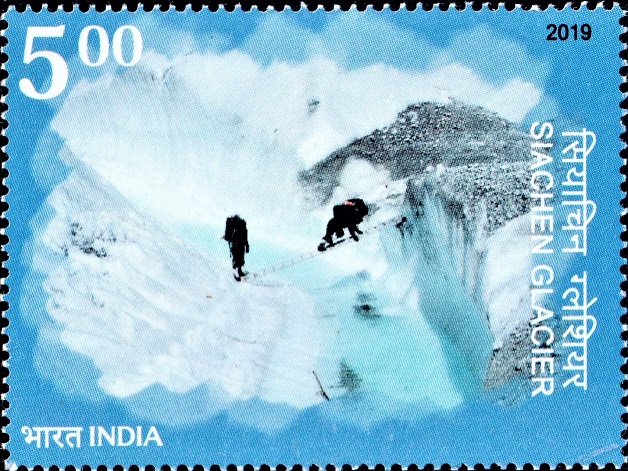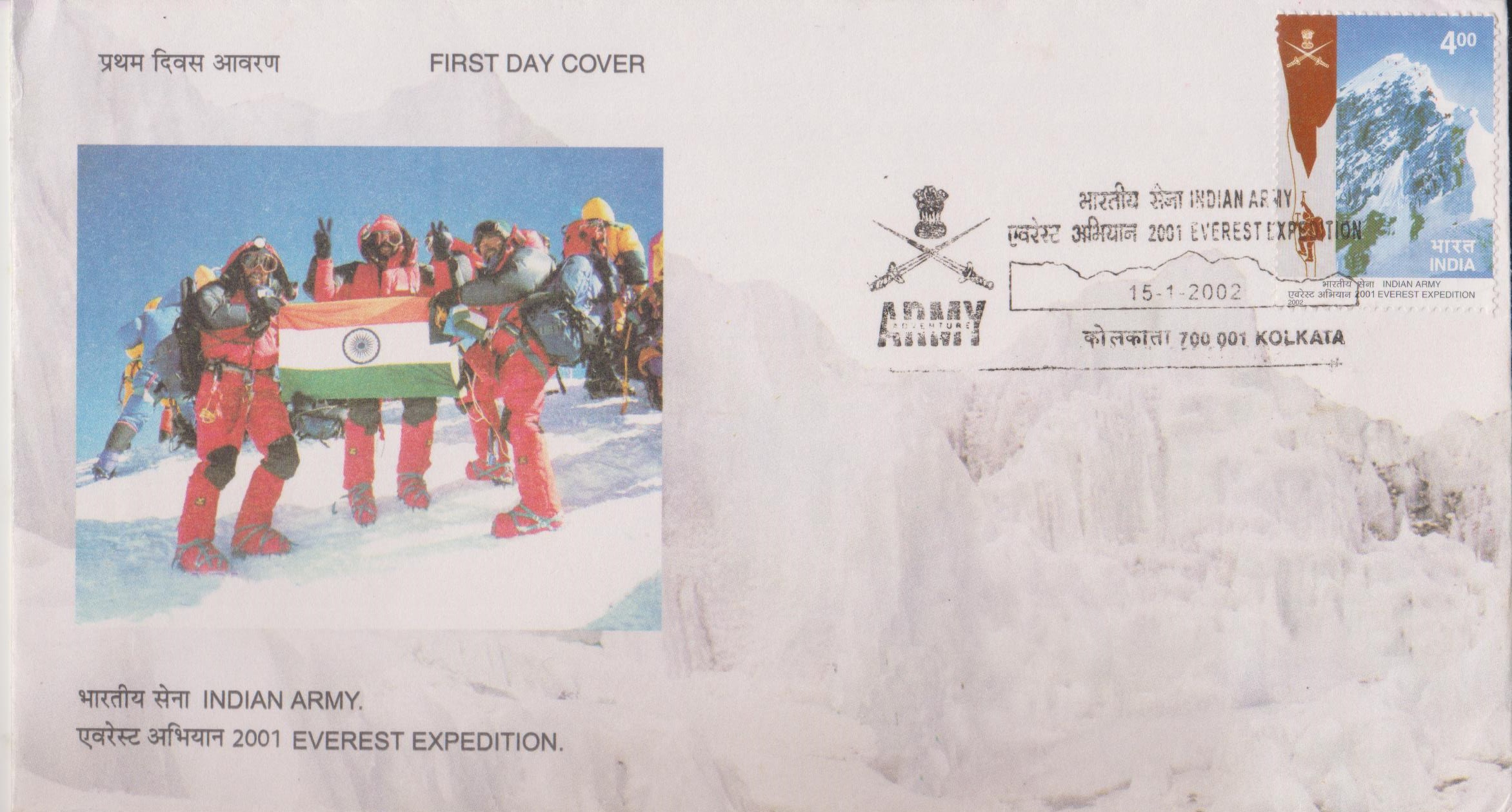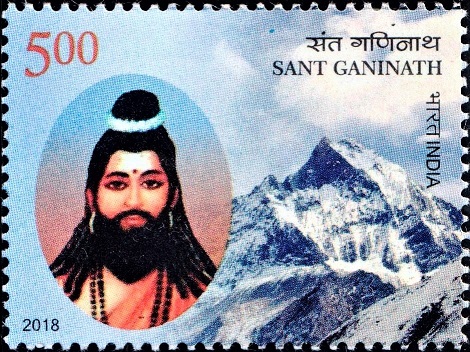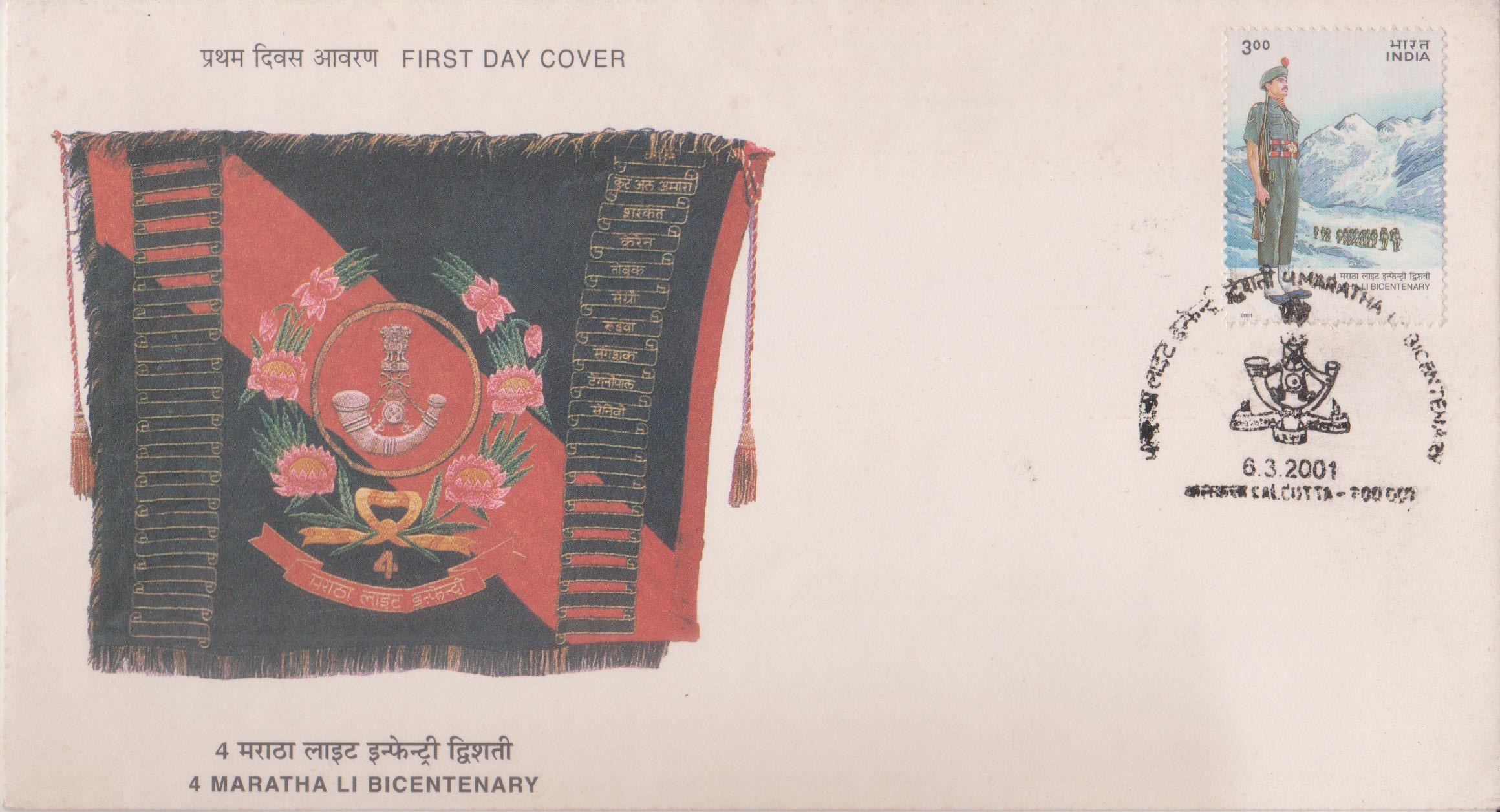
Siachen Glacier
A commemorative postage stamp on the Indian soldiers who protected the Siachen Glacier (highest battle field in the world), a glacier located in eastern Karakoram range in the Himalayas :
 Issued by India
Issued by India
Issued on Oct 25, 2019
Issued for : Department of Posts is proud to issue a Commemorative Postage Stamp on Siachen Glacier in honour of these gallant soldiers.
Credits :
Stamp/FDC/Brochure/Cancellation Cachet : Ms. Gulistaan
Type : Stamp, Mint Condition
Colour : Multi Colour
Denomination : 500 Paise
Stamps Printed : 600238
Printing Process : Wet Offset
Printer : Security Printing Press, Hyderabad
About :
- Siachen Glacier – ‘the highest battle field in the world’ is the land of extreme hostile climatic conditions, treacherous terrain with savage mountains. For the troops serving there, ‘courage and fortitude’ is the norm. In the local Balti language ‘Sia’ stands for ‘Wild Rose’ and ‘Chen’ means ‘place’. Wild Roses are found aplenty near the snout of the glacier and in its lower valleys. It is these roses which give the Glacier its name ‘Siachen – the place of Roses’.
- The Siachen Glacier emanates from Indira Col and runs for approximately 76.4 Km in a South-easterly direction to the source of the Nubra River. It is hemmed-in by the Saltoro Ridgeline to the West and Karakoram to the North and East. There are four important passes on the Saltoro Range namely Sia La, Bilafond La, Chulung La and Gyong La. In the South, this sector overlooks the Shyok River Valley, which lies in an East-west configuration. The area is characterised by high altitude mountainous terrain, which is glaciated and remains snow bound throughout the year. The heights in the area are between 12000 and 21000 feet.
- Prior to 1984, neither India nor Pakistan had any permanent presence in the area. In the 1970s and early 1980s, Pakistan permitted several foreign mountaineering expeditions to scale peaks on the glacier. This was with a design to reinforce its illegal claim over Siachen. In 1983-84, a force was raised by the Pakistan Army for the occupation and capture of the Saltoro Watershed; this was called the ‘Burzil Force’ and the Operation was code-named “Operation Ababeel”. However, the Indian Army launched “Operation MEGHDOOT” and defeated the nefarious designs of Pakistan Army by securing the Siachen Glacier.
- Operation MEGHDOOT was launched under HQ 26 Sector on 13 April, 1984. HQ 102 Infantry Brigade was raised on 01 March, 1985 and additional troops were deployed on the Saltoro Ridge under Operation MEGHDOOT. The formation was placed under command of 28 Infantry Division from 14 March, 1985 to 20 June, 1991 and reverted to 3 Infantry Division on 21 June, 1991. On 15 February, 2009, the Brigade was placed directly under HQ 14 Corps.
- The soldiers who defend the glacier are known as Siachen Warriors. The Siachen Warriors have made innumerable sacrifices displaying selfless devotion to the nation. The Siachen Warriors because of their deeds have been awarded with one Param Vir Chakra, one Ashok Chakra, five Mahavir Chakras, eight Kirti Chakras, thirty five Vir Chakras, thirty Shaurya Chakras, twenty two Yudh Seva Medals, two hundred nineteen Sena Medals and fifty three Mentions in Dispatches.
- Several attempts have been made by Pakistan to dislodge Indian troops from their positions. Indian troops in a testimony to their resilience, determination and bravery have thwarted these attempts even at the cost of precious and valuable lives. More than 1050 brave Indian soldiers have attained martyrdom due to weather and enemy actions in this cold and isolated battlefield.
- Text : Based on information received from the proponent.








[…] Rakshak‘. This unit also participated as one of the parties that captured the Siachin Glacier under ‘Operation Meghdoot‘. Both in peace and war, this unit has produced the finest […]